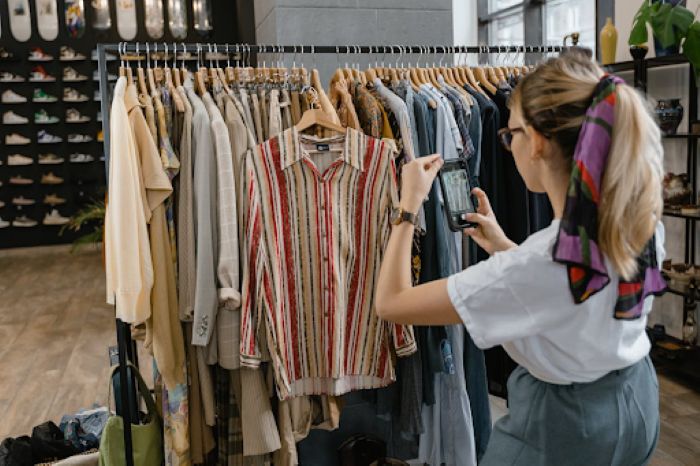Ad accounts tell a clear story this year. Manual audience stacks that once worked are losing steam, while automated targeting keeps winning delivery and lower costs. Meta’s Advantage+ push is not a side feature; it is now the default path for scale.
For many founders and marketing leads, the question is no longer whether to try automation. The question is how to make the machine work for your goals. If your company wants help inside this new model, partnering with an Instagram ads agency that understands Advantage+, signal quality, and creative volume can save months of trial and error.
Table of contents
What Advantage+ Changed in Automated Targeting
Advantage+ narrows the set of manual switches and gives the system more freedom to find buyers across placements, creatives, and audiences. You can still set a core objective, a sales event, and guardrails, but the engine decides where to spend most of the money.
This has two effects. First, lookalikes, interest stacks, and long lists of exclusions matter less than they did. Second, the inputs you can still control matter more.
Clear conversion events, clean catalogs for ecommerce, and reliable offline or first-party data give the system a better map. If those inputs are weak, automation spreads budget thin and you see random traffic.
If they are strong, the system learns faster and keeps costs stable as you scale.

Meta’s own guidance shows this direction, with Advantage+ Campaigns that test a wide mix of placements and creatives by default, and with heavier weight on machine-selected distribution.
Published help docs outline how these campaigns use historical performance to pick winning combinations across Feed, Stories, Reels, and more, which many teams now see in their reporting.
You still set the destination and the metric that pays the bills. The system handles the route.
Creative Is Now Your Automated Targeting
Since audience controls are lighter, creative has to carry more weight. In practice, this means more concepts, faster refresh, and clearer angles. Think of each creative as a filter that attracts the right person and repels the wrong one.
Here is a useful starting kit for service businesses:
- Short native videos that answer one clear question a buyer has before contacting you.
- Square and vertical cuts from the same shoot, captioned for sound-off viewing.
- A carousel or image series that shows before and after, a process step, or a customer outcome.
- One “social proof” unit, for example a quick testimonial with a face and a first name.
Keep text simple. Lead with the outcome and then the next step, like “Get a quote” or “Book a consult.” In Advantage+, the system mixes these assets and prefers the versions that drive the selected event.
You will rarely guess the top performer in advance, so the real work is giving the system enough fresh options to test.
Feed the AI With Better Signals
Automation cannot fix weak data. If the event you optimize for fires late, fires twice, or misses half of real leads, your learning is off. Fixing signals usually pays back faster than changing budgets.
Focus on three layers:
- On-site events: Use the latest Meta pixel setup and standard events for leads, add to cart, purchases, or custom events for bookings. Fire events at the right time with clean parameters like value, content type, and service tier.
- Server events: Add Conversions API to reduce data loss from browser limits and ad blockers. Send the same events from your server with strong match keys, for example email, phone, and client IP. This improves event match quality and reduces false positives.
- Offline data: If you sell by phone or in person, upload outcomes that happen off the website. Mark which leads became customers and the revenue tied to them. Automation learns which clicks predict real sales, not just form fills.
Budgets, Objectives, and Guardrails
Automated targeting does not remove the need for planning. It shifts the plan from “Who should we target” to “What should we optimize and protect.”
- Pick the objective that matches the money metric. If sales calls pay the bills, optimize for a booked call event, not just a landing page view. If that event volume is too low, build a short path to a pre-qualified lead and use that until you have stability.
- Use a budget that lets learning complete. With low daily budgets, the system never gets enough signals. Small accounts may need to focus on one campaign and one event to reach stable learning.
- Set simple exclusions and caps. Avoid overlapping campaigns that chase the same event. Keep frequency limits and placement blocks light unless you have a strong reason.
- Structure for clear read-outs. Separate campaigns by goal, for example lead generation versus remarketing. Inside each, give the system several creatives and formats so testing can run without you resetting learning every week.
This approach avoids the trap of over-segmentation. Many teams split budget into too many ad sets to feel “in control,” then fight learning limits and inconsistent delivery.
Smarter Testing Without Manual Audience Control
In 2025, testing shifts from dozens of interest groups to deliberate creative and offer tests. Here is a simple test ladder for a service business:
- Offer test: Two offers that can ship this month, for example “Free site visit” versus “$100 credit on first job.” Keep creatives similar, change only the offer.
- Angle test: For the winner, test two angles, like speed versus quality assurance. Again, keep as many factors the same as you can.
- Format test: Take the winning angle and produce it across video, carousel, and a simple image. Maintain the same hook and promise.
- Hook and intro test: Change the first three seconds and the first line. Small changes here can swing results more than any audience tweak.
Document each test with dates, budgets, and outcomes. Automation does not remove the need for discipline. It raises the value of it. Teams that log tests and review weekly trends make faster gains than teams that chase daily swings.

A Local Playbook for Australian Service Brands
Local targeting still matters for plumbers, clinics, legal firms, and trades. Advantage+ can run broad, but your inputs define who is worth reaching.
- Location: Use location at the campaign or ad set level, and match your service area. For multi-city coverage, rotate creatives with local proof points, like suburbs serviced or local hours.
- Proof: Show real staff, real offices, and local testimonials. People respond to signs that you are near them and available during their hours.
- Calls and messages: If a large share of customers prefer to call, optimize for calls or message replies. Track those outcomes with server events or offline uploads so the system learns the right patterns.
- Compliance and trust: Make it easy to find credentials, licenses, and terms on the landing page. For healthcare, legal, and finance, this improves approval and conversion quality.
Instagram’s reach in Australia is large and sustained, and Meta’s Advantage+ can use that reach across Feed, Stories, and Reels without manual micro-audiences.
For brands that need outcomes, the winners will be those that match that reach with clear offers, frequent creative refresh, and strong data hygiene.
Automation changes who moves fast. It rewards teams that produce more good inputs and spend less time flipping switches. If that feels like a shift, it is. But it is also an opening. Start with cleaner events, more creative angles, and one tight goal.
Let the system do the heavy lifting and give it the right signals to learn from.
Takeaway
If you take one step this week, audit your signal chain and creative library. Confirm that your key event fires once at the right moment, your server events are live, and you have at least five fresh creatives that sell one clear offer.
Give Advantage+ a budget that can learn, keep your structure simple, and make decisions from weekly trends. That one change will raise the odds that automated targeting and automation together find the people who are ready to buy.











